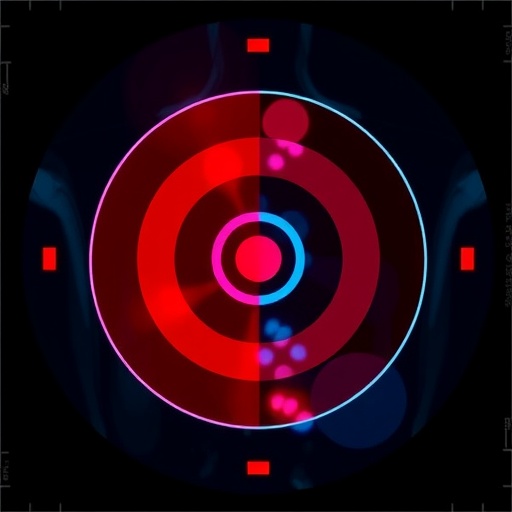The core principle of the S3T framework is to tailor screening strategies that are sensitive to individual risk factors, particularly age and biochemical markers. Earlier screening protocols did not take into account the different risk profiles that individuals may present at various ages. The research team emphasizes the importance of recognizing that not all men require the same level of vigilance when it comes to screening for prostate cancer. This stratified approach could drastically reduce unnecessary interventions while maintaining vigilance in those who are truly at risk.
In their study, the researchers conducted an extensive review of existing literature and clinical practice guidelines, seeking to uncover the nuances in prostate cancer screening recommendations. They found that the blanket approach to screening does not account for the vast variability in prostate cancer aggressiveness and the likelihood of life-threatening disease based on individual patient profiles. This key insight underpins the development of their stratified screening model and opens a new frontier in the quest for more effective cancer management strategies.
What sets the S3T model apart from traditional screenings is its dynamic flexibility, which allows healthcare practitioners to adapt their recommendations based on the most current evidence available regarding a patient’s health status. The research illustrates that older men are generally at higher risk for prostate cancer but may also have a lower likelihood of developing fatal disease. By incorporating both age and PSA levels into screening parameters, the likelihood of prolonging lives while minimizing harm can significantly improve.
During the study, the researchers analyzed various case studies and treatment approaches from around the world, distilling best practices into a comprehensive guide for physicians. The focus was not only on how to screen patients but also on how to interpret the results in the context of overall health and risk factors. By creating clear guidelines for interpreting PSA levels alongside age brackets, the study provides a roadmap for physicians to follow in making timely and informed decisions.
The impact of these findings extends beyond individual patient care. By optimizing screening guidelines, the S3T approach has the potential to reshape the landscape of prostate cancer management on a larger scale. The cost savings associated with reducing unnecessary testing and interventions could have ripple effects throughout the healthcare system. Furthermore, by enhancing the specificity of screening, resources can be allocated more efficiently to those who truly need care, ultimately improving overall healthcare delivery.
As the medical community grapples with the nuances of cancer screening, studies like S3T come at a critical time, seeking to refine and improve their strategies. The research continues to underscore a vital aspect: the need for adopting a tailored approach that champions personalized medicine. The findings advocate for an evolution in medical practice, emphasizing that a one-size-fits-all methodology may no longer suffice in today’s advanced healthcare ecosystem.
Through extensive research and collaboration, the authors of the S3T study propose a model that aligns with the broader trend towards personalized healthcare. The consideration of individual factors within screening protocols mirrors advancements seen in other fields of medicine, such as genomics and pharmacology, where customized treatments yield better outcomes. The S3T approach aims to integrate these principles into the realm of cancer detection and prevention.
As the paper is set to be published in the Journal of General Internal Medicine, it is poised to garner attention from both the medical community and the public. The goal is to stimulate a dialogue about the necessity of adapting cancer screening methods to reflect the reality of patient care. Supporters of the research are hopeful that this study will serve as a catalyst for policy changes that could improve patient outcomes and experience.
In a world increasingly aware of the importance of tailored healthcare, S3T represents not only an academic advancement but also a powerful statement about the future of cancer care. It is a call to action for healthcare providers, policymakers, and patients alike, advocating for a more refined, evidence-based approach to prostate cancer screening. This shift symbolizes a commitment to reducing harm while safeguarding the health and well-being of individuals as they navigate the complexities of cancer care.
In conclusion, this landmark study sets the stage for a new era of prostate cancer screening that could significantly alter how the disease is understood and managed. The promise inherent in the S3T model lies in its potential to mitigate harm associated with overdiagnosis while still capturing the critical nuances in patient risk profiles. As healthcare continues to evolve, strategies like S3T will undoubtedly shape the dialogue and direction of medical practices for years to come.
While the core findings of this research are compelling, they also raise provocative questions about the broader implications for patient care across various disciplines. The authors encourage further investigation into personalized screening paradigms, reflecting an unwavering belief in the need for ongoing innovation in healthcare practices. As this study paves the way for future research, it reminds us that putting patients first invariably leads to better health outcomes.
Subject of Research: Prostate cancer screening and treatment stratification.
Article Title: Smarter Screening and Treatment (S3T): Mitigating Harm via Age- and Prostate-Specific Antigen-Stratified Screening.
Article References:
Image Credits: AI Generated
DOI: 10.1007/s11606-025-09737-7
Keywords: Prostate cancer, screening, personalized medicine, health outcomes, age stratification.
Tags: age stratification in cancer detectionevolving prostate cancer treatment practiceshealthcare cost savings in prostate treatmentinnovative approaches to prostate healthmitigating harm in prostate diagnosticspersonalized prostate cancer managementprostate cancer screening strategiesPSA test guidelines and implicationsreducing overdiagnosis in cancer screeningrisk factors in prostate cancerSmarter Screening and Treatment (S3T) frameworktailored screening protocols for men





